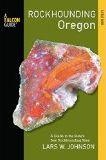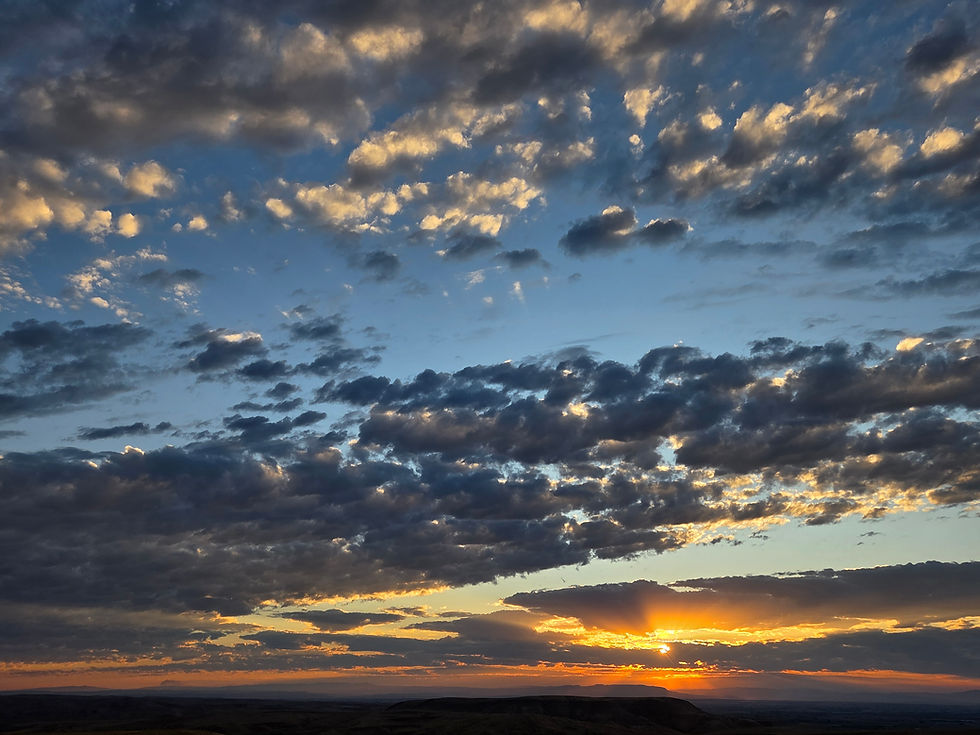10 Naturalist Field Guides for the Owyhee
- Sammy Castonguay

- Jul 9, 2020
- 7 min read
Updated: Jul 22, 2022

Plants! Trees! Birds! Rocks! Amphibians! Reptiles! Mammals! Stars! Clouds! Mushrooms! Insects!
During our guided day hikes, we are often asked, "What is this plant?", shortly followed up with a "How do you know?" Personally, I've had over a decade of direct experience with knowledgeable naturalists orally giving me information. But to retain these, I have a core set of books for identification! These are my top-recommended field guides useful in the Owyhee region, presented in no particular order.
Sagebrush Country: A Wildflower Sanctuary – Ronald J. Taylor

This is an amazing guide to the wildflowers of much of eastern Oregon, including the Owyhee. It excludes several uncommon species, but most of the flowering plants you will find out there are pictured in this book. To use this guide, you can simply thumb through the pictures and play "Does it look like this?" The book is also arranged by plant families. Because of this, it really helps to have some introductory botanical knowledge to look up specific attributes. In botany, the flower structure is the key to identification. Certain families always yield the same flower characteristics, such as the banner, wing, and keel of the Fabaceae family (legumes) or the 5 petals, 5 sepals, and many stamens of the Ranunculaceae family (buttercups).
This publication is great, but has its limits as it does not include non-flowering plants like conifer trees. If you are looking for something a bit more basic and complete, try Wildflowers of Oregon by Damian Fagan.
Sibley Birds of the West – David Allen Sibley

For the illustrations alone, this book is well worth its weight in years of pleasure! I must admit that, although I'm a naturalist, I don't remember birds (animals in general, really) very well, so this book gets a lot of use, even visiting the same pages over and over. While not specific to our region, this identification guide (as others listed below) is useful all over the western United States. In the field, however, I usually elect to take All the Birds of North America from the American Bird Conservancy.
Peterson Guide to Mammals – Fiona A. Reid

The Owyhee is full of furry critters! The iconic coyote, badgers, rock chucks (yellow-belly marmot), elk, and of course, the amazingly dashing pronghorn antelope all live in the Owyhee region. Personally, I am not very good at spotting animals, so this guide doesn't often make it into the field with me. Instead, for those critters, I do see I take pictures and make a few notes to use this guide when I get home. But more often than not, I am with other Owyhee enthusiasts that tend to know their animals!
This is a broad book that covers a wide geography, as some of the others on this list. While I hope to one day see an Owyhee-specific compilation, this remains one of my favorite animal guides for the region.
Walk Through the Heavens – Milton D. Meifetz and Will Tirion
Turn Left at Orion – Guy Consolmagno and Dan M.Davis
Night Sky – National Audubon Society
For the night sky, I have three recommendations! Depending on your stargazing methods and what you intend to learn, each of these books has its advantages.
For my introductory astronomy class at Treasure Valley Community College, I require A Walk Through the Heavens as I feel it is the best resource for navigating the night sky like driving through a city. It uses easy-to-find, landmark stars or constellations, and then guides you through the sky using an outstretched hand as a measuring tool. This method seems to really help stargazers get oriented in the night sky!
Turn Left at Orion has the same basic navigation, but includes a bit more information on using a telescope. Night Sky is more complete in its information for each constellation and night sky attributes, with less time spent on navigation and more pictures of the night sky with labels. So, depending on how you learn, each of these is great!

But wait! For camping or backpacking trips, nothing beats the basic and compact star and planet locator, often referred to as a star wheel. While there is a learning curve, this is an invaluable resource for answering the common camping question "What is that constellation?" By aligning the date and time, you can use it as a visual guide. On the back is a chart that helps you to figure out approximately where the planets will be located along the ecliptic.
Familiar Reptiles and Amphibians of North America – National Audubon Society

As to all Audubon products, this one impresses with the marvelous pictures. It is relatively easy to use as compared to a couple of the other guides listed above. This one also gives wonderful life habit tips about all species. It's well-organized and a pleasure to read. We only recently picked this one up as my daughter Neva has gotten interested in Owyhee frogs!
Roadside Geology of Oregon – Marli B. Miller
Geology Underfoot in Southern Idaho – Shawn Willsey
Rockhounding Oregon – Lars W. Johnson
Of course I had to give three rock recommendations! Since I am a geoscientist by training (M.Sc., University of Oregon), I get a little intense about the rocks! A simple question of "What is this rock?" can lead to a discussion on mantle chemistry and magma thermodynamics, but that is because there are two ways we, as naturalists, typically interact with the rocks: at our scale (a hand sample) and at the rocks' scale (like a mountain).
When many folks think about rocks in the wild, they might be looking specifically for pretty rocks that are small enough to pick up, such as opals, jasper, petrified wood, or gems like garnet. When the intent is to find rocks to take home as samples, this is called rockhounding. The "Rockhounding Oregon" guidebook is a marvelous complete guide to dozens of locations around Oregon to find cool-looking rocks! There are several locations in the Owyhee region listed in the book with immaculate directions.
The other two books are less about sample rocks and more about the story of the earth underfoot. While you are hiking or rafting the river, the towering cliffs and outcrops of rock are not typical rockhounding targets. Instead, these normal-looking rocks are actually records of the region's geologic past. For example, the wonderful rock exposed at Leslie Gulch is called a volcanic tuff and is 15.8 million years old! These two books—Roadside Geology and Idaho Underfoot—give that type of geologic history information, but it generally takes a bit more reading from the early chapters to answer the question "How did this form?" While neither of the books focuses on the Owyhee much, much of the peripheral information helps with that question.
An honorable mention: Sedimentary Rocks in the Field: A Color Guide by Dorrik A.V. Stow is an amazingly useful rock book for the geologist and casual observer, and covers the world! Because rocks in Taiwan can be the same as in Montana (just like species or genetics), books like this can help you learn the basics of identifying rocks.
All that the Rain Promises, and More... – David Arora

Ah! The mushrooms! This guide was mentioned in the previous blog that was specifically dedicated to Owyhee fungi. This short and sweet little hip guide is amazingly efficient at helping to navigate you right to an identification or recommendation. The inside covers are lined with a line-drawing guide to mushroom morphology lingo. It literally draws it out and makes the mysterious mushrooms a bit less unknown. Actually, the name of the long (but still used) field guide is Mushrooms Demystified by the same author. Besides being useful, this book is a hoot to read! Full of silly content and remarks, Arora has a wit around mushrooms that bring a whole new animation to a still creature.
Peterson's Field Guide to Insects – Donald J. Borror and Richard E. White

Now, this is where the field gets intense! If you are walking out into the field with a bug net, you've gone full naturalist! While I have met relatively few etymologists, I have encountered dozens of them randomly in the field during peak butterfly migration in Wisconsin. We occasionally carry the net and it is always a joy to put eyes on the tiny, alien-looking creatures. This is yet another invaluable field guide. There are few insects I know by heart, but the arrangement of this Peterson guide is intuitive and makes it easy to flip and find.
The macrophotography is incredible, showing the smallest details of some insect identifying characteristics. Often the photo images are paired with a nice drawing showing specific features.
Cloud Collectors Handbook – Gavin Pretor-Pinney

This peculiar little book was the one I recommended for my GSCI 109 Meteorology course at Treasure Valley Community College. It is broken down into a collection format, kind of like collecting Pokémon! There are wonderful and dramatic cloud pictures of every type of cloud that is accepted and named by the World Metrologic Association. From the common and well-known cumulous or cirrus to the obscure noctilucent and mammatus, this book will help you identify every floating, opaque water-droplet beings in the sky.
When you purchase, make sure to start using it right away to mark your cloud observations!
Peterson's Field Guide: Western Trees – George A. Petrides and Olivia Petrides

This one slipped in last, mostly because of the lack of trees in most of the Owyhee. The most you'll find is the iconic juniper and some pondorosa pine and Douglas fir at higher elevations. Down in the riparian areas, you see willow, alder, and the occasional cottonwood. But a field guide like this can help you to refine your knowledge of the trees, looking at leaf shape and seeds/cones rather than profile or bark style. I was rather surprised to see a stand of aspen once, but there are pockets of tree diversity out there!
True to other Peterson guides, this classic marries complete profile photographs with exquisitely illustrated identifying characteristics.
Now you have a full set of identification books for anything you see in the Owyhee! If you are looking to purchase books, we recommend buying used and local. Rediscovered Books in Boise is great and The Rubaiyat in Caldwell. We hope that this compilation of field guide books can help give you a kick start to your identification pursuits!

Sammy has used several of these books for decades in his pursuit of being familiar with every aspect of the natural world!
I am very fond of Roadside Geology of Oregon as it was written by my academic advisor for my master's degree, Dr. Marli B. Miller at the University of Oregon (she took the photo to the left). Under her guidance, I made a geologic map of an area in Death Valley National Park known as the Amargosa Chaos. She also let me tag along on her roadside geology adventures and I'm photographed on page 268.















Comments